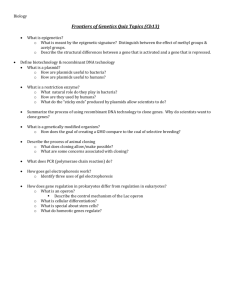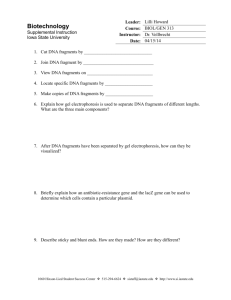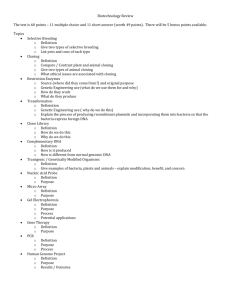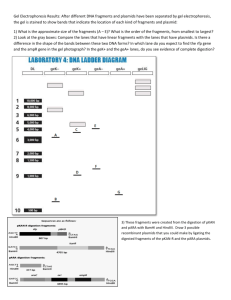BIOTECHNOLOGICAL TOOLS AND TECHNIQUES Gel Electrophoresis
advertisement
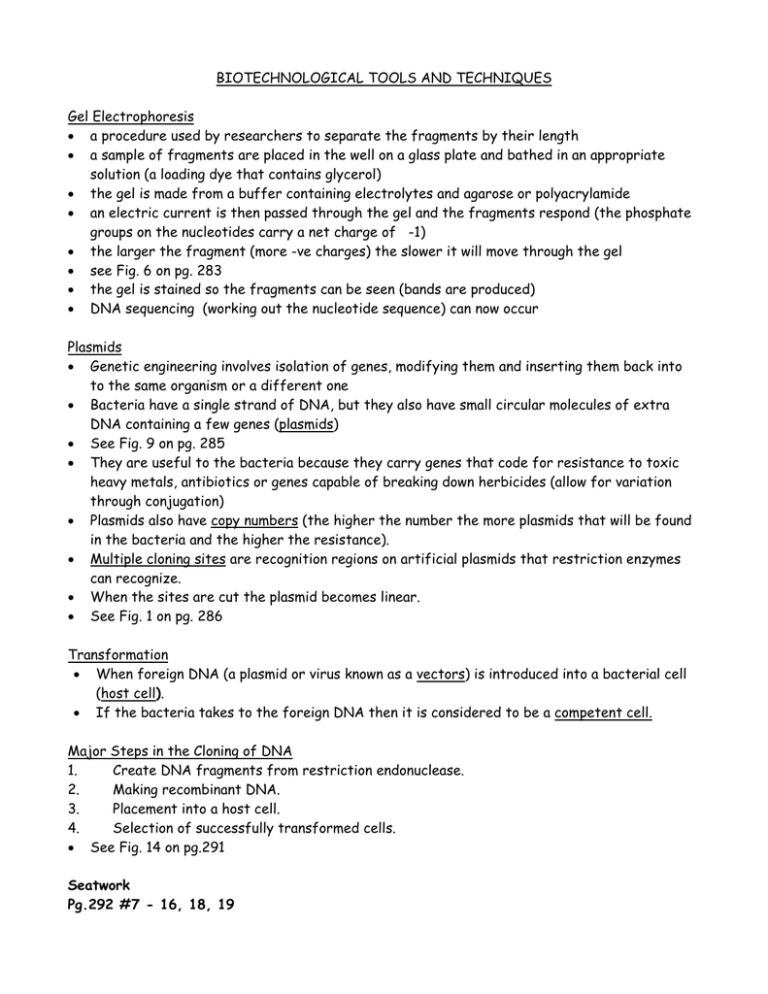
BIOTECHNOLOGICAL TOOLS AND TECHNIQUES Gel Electrophoresis a procedure used by researchers to separate the fragments by their length a sample of fragments are placed in the well on a glass plate and bathed in an appropriate solution (a loading dye that contains glycerol) the gel is made from a buffer containing electrolytes and agarose or polyacrylamide an electric current is then passed through the gel and the fragments respond (the phosphate groups on the nucleotides carry a net charge of -1) the larger the fragment (more -ve charges) the slower it will move through the gel see Fig. 6 on pg. 283 the gel is stained so the fragments can be seen (bands are produced) DNA sequencing (working out the nucleotide sequence) can now occur Plasmids Genetic engineering involves isolation of genes, modifying them and inserting them back into to the same organism or a different one Bacteria have a single strand of DNA, but they also have small circular molecules of extra DNA containing a few genes (plasmids) See Fig. 9 on pg. 285 They are useful to the bacteria because they carry genes that code for resistance to toxic heavy metals, antibiotics or genes capable of breaking down herbicides (allow for variation through conjugation) Plasmids also have copy numbers (the higher the number the more plasmids that will be found in the bacteria and the higher the resistance). Multiple cloning sites are recognition regions on artificial plasmids that restriction enzymes can recognize. When the sites are cut the plasmid becomes linear. See Fig. 1 on pg. 286 Transformation When foreign DNA (a plasmid or virus known as a vectors) is introduced into a bacterial cell (host cell). If the bacteria takes to the foreign DNA then it is considered to be a competent cell. Major Steps in the Cloning of DNA 1. Create DNA fragments from restriction endonuclease. 2. Making recombinant DNA. 3. Placement into a host cell. 4. Selection of successfully transformed cells. See Fig. 14 on pg.291 Seatwork Pg.292 #7 - 16, 18, 19

